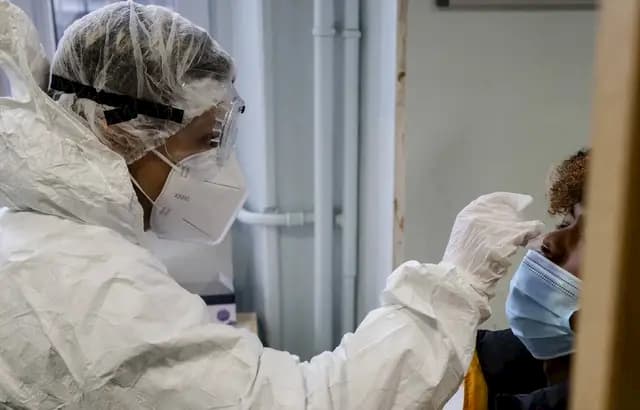Coronavirus in Paris: A Sharp Decline in the Epidemic and Many Unresolved Questions

HEALTH: The number of people infected with the coronavirus seems to be falling faster in the capital than in the rest of France
- The incidence, that is to say the number of cases per 100,000 inhabitants, has fallen by nearly 90% in Paris since the end of October.
- The test positivity rate in the capital fell from 21% to 7% in just over a month.
- Just over 70% of intensive care patients are infected with coronavirus Covid-19.
In early October, the quivering figures of coronavirus contamination in the capital had sparked the first glimmers of hope. “But nobody expected such a marked fall, it is even quite mysterious from a scientific point of view”, recognizes Michèle Legeas, a teacher at the School of Advanced Studies in Public Health, a specialist in analysis and management of health risk situations.
Since the end of October, the incidence of the epidemic, that is to say, the number of cases per 100,000 inhabitants, has fallen by more than 90% in Paris. It is now, according to Public Health France, similar to what it was at the end of August: 58.7 against 97.5 on average in France. The same is true for the test positivity rate: it is 7% where it is 11% on average in France. The capital is now one of the departments where the circulation of the virus is the weakest, even though it was one of the most affected a few weeks ago.
The effects of curfews and confinement
If the second wave is not quite behind us yet – nearly three quarters of the resuscitation beds in the region are occupied by patients with Covid-19– it seems to have ebbed more quickly than during the first confinement. And more frankly than in the rest of France. “There is probably a combination of factors that explains these figures, but we lack the perspective to say which element was more determining than another”, insists the researcher. The curfew, which came into effect throughout the region on October 17, followed by confinement, are they enough to explain this drop? They undoubtedly played a major role, the decline began at the beginning of November, around ten days after the curfew. However, such a decline has not been observed in the other metropolises which have been the subject of such measures.
Collective immunity in question
Could this lag be explained by the fact that the region was already very strongly affected during the first wave? According to models from the Pasteur Institute, around 10% of Ile-de-France residents contracted Covid-19 in the spring, a figure which now stands between 15 and 20%. It is estimated that the virus will stop circulating if 60 to 70% of the population is immune. But this figure could be lower if barrier gestures are respected and interactions limited. In the Chained Duck, the president of the scientific council, Jean-François Delfraissy, admitted in mid-November to consider the possibility of a beginning of collective immunity. “This is a very hot subject that we have on the table with our European colleagues and which raises the question of collective immunity in Paris, but also in London or Rotterdam … Should we wait until at least 50% of a population is immune to begin to control the virus? Or can we settle for around 25%? “
The fact remains that this decline if it is marked, could also be partly linked to a methodological bias. Numerous delays in recording data have been observed since the launch of antigenic tests, these rapid tests which can, in particular, be done in pharmacies. They do not question the sharp drop in incidence but could weight it. “The only really reliable data to speak of a decline in the epidemic are hospitalizations and resuscitations,” says epidemiologist and biostatistician, Catherine Hill. The other indicators, starting with the incidence or the positivity rate, are related to public policies. Thus, if we conduct screening campaigns, for example in high schools as is currently the case, we will necessarily have more negative cases and therefore lower rates.
Enjoyed this? Get the week’s top France stories
One email every Sunday. Unsubscribe anytime.


